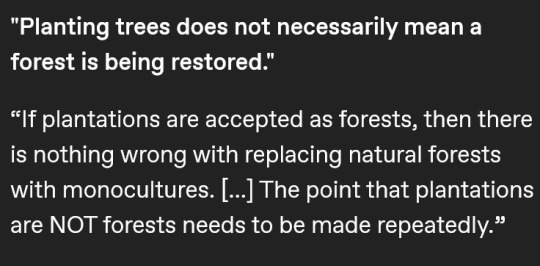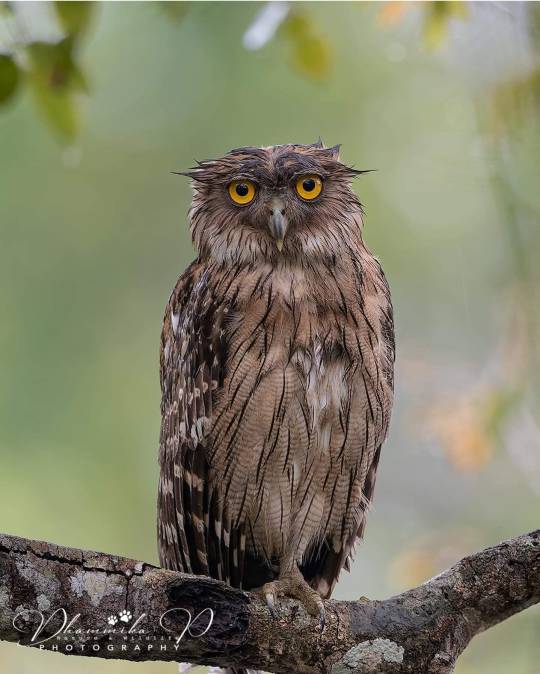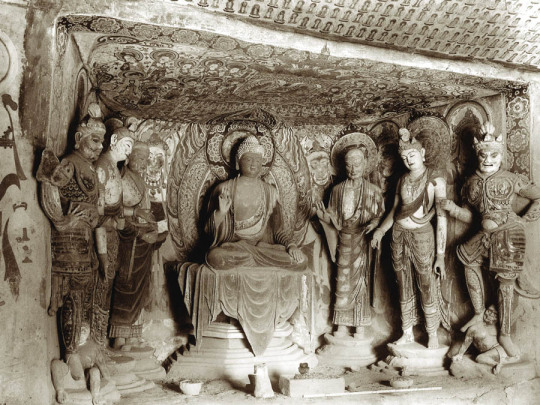#himalayan region
Text
#Nahan#Himachal Pradesh#Hill Station#Nature Escape#Historic Town#cultural heritage#scenic beauty#tourist destination#himalayan region#Sirmour District#travel india#Temples In Himachal#Renuka Lake#Adventure Travel#local cuisine#Off beat Destination#Explore Himachal#weekend getaway#travel photography#Nahan Tourism
0 notes
Text
Glacial Crisis Grips Both Sides LoC: 25% glaciers vanished
Nosheen Khawaja
Satellite image of some of the glaciers in Pakistan Administered Kashmir taken in December 2020.
MUZAFFARABAD: Rising temperatures, frequent rainfall, hailstorms, cloud bursts, and unusual snowfall patterns are contributing to the fast melting of glaciers in the Neelum Valley region, signalling their complete disappearance in the next few decades.
A video of melting glaciers in…

View On WordPress
#Climate Change#Environment Expert#Fast meltdown of snow deposits#fast receding glaciers#Gilgit-Baltistan#Glaciers in Kashmir#Green Faith#Gujjar Nar#Guraize Valley#Gurez#Heaven on Earth#Himalayan Region#Jammu and Kashmir#Journal on Climate Change#Kailash Kund#Kolhai Glaciers#Ladakh region#Neelum Valley#Riat Lake#Rising temperatures of Planet#Sardar Muhammad Rafique Khan#Shounthar Valley#Siachen Glaciers
0 notes
Text


Part 2 of my modern avatar au, The Gaang (part 1)
#avatar aang#atla katara#atla toph#atla sokka#atla suki#atla#avatar the last airbender#modern avatar#atla modern au#my art#atla fanart#kataang#CAUSE THEY ARE IMPORTANT IN THIS AU#lots of inner debates on how to deal with aang's tattoos and if to make him say an actual buddhist#decided that he and monk gyatso (plus a handful of others) are/were part of a largely dying religion of a nomadic group#from the himalayan/tibetan plateau region that's a mix of buddhism hinduism and other religions (plus air nomad culture)#due to the politics of region aang and gyatso traveled around the world which is how he met katara and sokka#who were on a fieldtrip in the south (of canada)#they live in the Qikiqtaaluk Region originally in a smaller northern town but to continue their schooling they moved to iqaluit#Toph is from China and she met the gaang during the first big trip sokka katara and aang took together (at aangs begging)#meet her the summer before katara's first semester of college (so she was 18 aang 16 sokka 19 toph 16)#also by 16 aang is his own guardian cause of gyatso's death so he just does whatever p much#suki from okinawa and they meet briefly another summer of college when traveling to a bunch of islands in the pacific#suki specializes in and teaches ryukyuan martial arts (she's ryukyuan)#all reunite after sokka and katara's graduation (katara graduates a year early) during aang sokka and kataras celebration world tour#where they come into full actual contact with the fire nation crew#they are all in their twenties in these expect for monk aang who is a teen#hehe i cant wait to make more for this auuuu
3K notes
·
View notes
Text
#Nepal trekking#Solo trekking#Trekking regulations#Remote regions#Himalayan trekking#Nepal tourism#Safety regulations#Trekking permits#Travel restrictions#Adventure tourism#Trekking guides#Solo travel#Outdoor adventure#Annapurna circuit#Everest base camp#Langtang trek#Manaslu trek#Mustang trek#your spiritual journey
2 notes
·
View notes
Text
Island Peak: A Test of Willpower for Experienced Climbers
Island Peak (6,189 meters), also known as Imja Tse, offers a demanding and rewarding climb in Nepal's Khumbu region, neighboring the mighty Everest. This pyramid-shaped peak attracts experienced climbers seeking a challenging ascent amidst breathtaking Himalayan scenery. The climb tests technical skills, physical fitness, and the ability to handle the unforgiving conditions of high altitudes.

Gateway to Adventure
The expedition typically begins in Kathmandu, Nepal's capital city. Here, climbers finalize logistics, assemble specialized gear for extreme conditions, and undergo crucial training to prepare their bodies for the thin air encountered at high altitude. Transportation then takes them to a starting point like Lukla, the gateway to Everest. The trek to Island Peak Base Camp (around 5,030 meters) commences, offering stunning views of surrounding peaks like Lhotse (8,516 meters) and Ama Dablam (6,812 meters).
Acclimatization and Technical Training
The initial stages involve trekking through the Khumbu Valley, a region adorned with traditional villages, prayer flags, and dramatic mountain vistas. This period is crucial for acclimatization, allowing climbers to gradually adjust to the increasing altitude while enjoying the rich culture of the region. Villages like Namche Bazaar and Tengboche offer rest stops and a chance to interact with the local people. As the trek progresses, the focus shifts towards technical aspects of the climb. Establishing Base Camp marks the beginning of technical training, with practice sessions on fixed ropes and crevasse rescue techniques.
The Ascents: A Blend of Skill and Grit
The climb from Base Camp involves traversing glaciers with crevasses and navigating the challenging Lhotse face. Establishing camps at progressively higher altitudes (Camp 1 around 5,600 meters and Camp 2 around 5,800 meters) tests climbers' stamina and ability to function in thin air. The final summit push requires excellent route-finding skills, surefootedness on scree slopes, and the ability to handle fixed ropes and potentially ladders for specific sections. Reaching the summit rewards climbers with breathtaking panoramic views of the Everest region before beginning the technical descent.
A Return to Base Camp and Beyond
The descent requires careful navigation and focus due to fatigue and potential weather changes. Reaching Base Camp signifies a successful summit and a return to a more breathable environment. The trek back to Lukla and eventually Kathmandu allows climbers to reflect on their accomplishment and celebrate conquering a technically demanding peak.
A Climber's Badge of Honor
Island Peak Climbing is a prestigious feat for experienced mountaineers. While less crowded than Everest, it demands a unique blend of technical skills, exceptional physical fitness, and the ability to make sound decisions in a challenging environment. For those who reach the summit, the experience becomes a testament to their climbing abilities and a badge of honor in the record books of this captivating peak.
#Island Peak Climbing#Peak Climbing in Nepal#Imja Tse Climbing#Khumbu Region#Himalayan Adventure#Peak Climbing Expedition#Pyramid-Shaped Peak
0 notes
Text
Vivid Metropolis Chronicles: Unveiling The 2024 Budget's Political Narrative In Himalayan Regions - IMPRI Impact And Policy Research Institute
Tikendra Panwar
In 2015, the Government of India launched its Smart Cities Mission, envisioned as the lighthouse of city development. With a total of 100 cities included in its proposal, this flagship programme received budgetary support and continued to dominate urban planning discussions.
However, there was no mention of urban planning or cities in the Union budget speech. It appears that the…

View On WordPress
#Budget039s#Chronicles#Himalayan#impact#impri#Institute#Metropolis#Narrative#policy#political#Regions#research#Unveiling#Vivid
0 notes
Text

12 October 2023, 02:35 AM
Finally wrote my review for these well-deserved kind and hardworking soul. Unfortunately, I can't change the month to September. So be it. Still, I respect these people a lot. Namaste! 🏔🇳🇵
0 notes
Text

#Himachal Pradesh travel#Top tourist destinations#Indian Himalayan region#Adventure in Himachal#Nature exploration#Cultural experiences#Hill stations in Himachal#Best places to visit#Vacation spots in India#Himachal Pradesh attractions#Scenic landscapes#Travel guide#Incredible India#Mountain getaways#Himachal vacation tips
0 notes
Link
Manaslu Circuit Activities are boundless for enthusiastic travelers as well all types of people and age groups.
#Annapurna Himalayas#annapurna trekking#everest#everest base camp#Himalayan region of Nepal#travel tips#trekking
0 notes
Text

#Lower Dolpo Trekking goes through the ancient yak caravan route#in the Trans- Himalayan region of Nepal. It is one of the most isolated parts of Nepal#travel#nature#https://www.vertexholiday.com/trips/lower-dolpo-trekking
0 notes
Text
Hatkoti Temple in Shimla: A Tranquil Haven of Spiritual Grace and Architectural Splendor | #travel
#Hatkoti Temple#Shimla#Himachal Pradesh#Goddess Mahishasuramardini#Durga Devi#Himachali architecture#Religious pilgrimage#Spiritual significance#Festivals at Hatkoti Temple#Navratri celebrations#Scenic landscapes#Himalayan region#Wooden structures#Cultural heritage#Devotional journey#Religious traditions#Goddess worship#Spiritual retreat#Shimla district#Tranquil environment
0 notes
Text
Pleasure in Lidder Valley
By Syed Salman
“Gar firdous bar-ruhe zamin ast, Hamin asto hamin ast“.
Perhaps because of the fame of Himalayas and the love for trekking, Pahalgam has always been, to me, a strenuous grill. It is one of those places you really should visit with a backpack,and go with the firm intention of getting some good healthy exercise, trudging uphill and down dale.
But then, Pahalgam is also one of the…

View On WordPress
#Adventure Valleys#Amarnath Cave#Aru on banks of Lidder#Beautiful Trek#Black Pines#Capture Beauty of Nature#Enchanting places on the Earth#Excellent Views of Nature#Flora and Fauna#Heaven on Earth#Highlands of Himalayan Region#Hiking area#Kashmir#Kashmir wazwan#Kashmiri shawls#Kolhai Glacier#Lidder river#Lidder Valley#Pahalgam Valley#Persian Poet&039;s couplets#Pine Forests
0 notes
Text

Despite its green image, Ireland has surprisingly little forest. [...] [M]ore than 80% of the island of Ireland was [once] covered in trees. [...] [O]f that 11% of the Republic of Ireland that is [now] forested, the vast majority (9% of the country) is planted with [non-native] spruces like the Sitka spruce [in commercial plantations], a fast growing conifer originally from Alaska which can be harvested after just 15 years. Just 2% of Ireland is covered with native broadleaf trees.
Text by: Martha O’Hagan Luff. “Ireland has lost almost all of its native forests - here’s how to bring them back.” The Conversation. 24 February 2023. [Emphasis added.]
---
[I]ndustrial [...] oil palm plantations [...] have proliferated in tropical regions in many parts of the world, often built at the expense of mangrove and humid forest lands, with the aim to transform them from 'worthless swamp' to agro-industrial complexes [...]. Another clear case [...] comes from the southernmost area in the Colombian Pacific [...]. Here, since the early 1980s, the forest has been destroyed and communities displaced to give way to oil palm plantations. Inexistent in the 1970s, by the mid-1990s they had expanded to over 30,000 hectares. The monotony of the plantation - row after row of palm as far as you can see, a green desert of sorts - replaced the diverse, heterogenous and entangled world of forest and communities.
Text by: Arturo Escobar. "Thinking-Feeling with the Earth: Territorial Struggles and the Ontological Dimension of the Epistemologies of the South." Revista de Antropologia Iberoamericana Volume 11 Issue 1. 2016. [Emphasis added.]
---
But efforts to increase global tree cover to limit climate change have skewed towards erecting plantations of fast-growing trees [...] [because] planting trees can demonstrate results a lot quicker than natural forest restoration. [...] [But] ill-advised tree planting can unleash invasive species [...]. [In India] [t]o maximize how much timber these forests yielded, British foresters planted pines from Europe and North America in extensive plantations in the Himalayan region [...] and introduced acacia trees from Australia [...]. One of these species, wattle (Acacia mearnsii) [...] was planted in [...] the Western Ghats. This area is what scientists all a biodiversity hotspot – a globally rare ecosystem replete with species. Wattle has since become invasive and taken over much of the region’s mountainous grasslands. Similarly, pine has spread over much of the Himalayas and displaced native oak trees while teak has replaced sal, a native hardwood, in central India. Both oak and sal are valued for [...] fertiliser, medicine and oil. Their loss [...] impoverished many [local and Indigenous people]. [...]
India’s national forest policy [...] aims for trees on 33% of the country’s area. Schemes under this policy include plantations consisting of a single species such as eucalyptus or bamboo which grow fast and can increase tree cover quickly, demonstrating success according to this dubious measure. Sometimes these trees are planted in grasslands and other ecosystems where tree cover is naturally low. [...] The success of forest restoration efforts cannot be measured by tree cover alone. The Indian government’s definition of “forest” still encompasses plantations of a single tree species, orchards and even bamboo, which actually belongs to the grass family. This means that biennial forest surveys cannot quantify how much natural forest has been restored, or convey the consequences of displacing native trees with competitive plantation species or identify if these exotic trees have invaded natural grasslands which have then been falsely recorded as restored forests. [...] Planting trees does not necessarily mean a forest is being restored. And reviving ecosystems in which trees are scarce is important too.
Text by: Dhanapal Govindarajulu. "India was a tree planting laboratory for 200 years - here are the results." The Conversation. 10 August 2023. [Emphasis added.]
---
Nations and companies are competing to appropriate the last piece of available “untapped” forest that can provide the most amount of “environmental services.” [...] When British Empire forestry was first established as a disciplinary practice in India, [...] it proscribed private interests and initiated a new system of forest management based on a logic of utilitarian [extraction] [...]. Rather than the actual survival of plants or animals, the goal of this forestry was focused on preventing the exhaustion of resource extraction. [...]
Text by: Daniel Fernandez and Alon Schwabe. "The Offsetted." e-flux Architecture (Positions). November 2013. [Emphasis added.]
---
At first glance, the statistics tell a hopeful story: Chile’s forests are expanding. […] On the ground, however, a different scene plays out: monocultures have replaced diverse natural forests [...]. At the crux of these [...] narratives is the definition of a single word: “forest.” [...] Pinochet’s wave of [...] [laws] included Forest Ordinance 701, passed in 1974, which subsidized the expansion of tree plantations [...] and gave the National Forestry Corporation control of Mapuche lands. This law set in motion an enormous expansion in fiber-farms, which are vast expanses of monoculture plantations Pinus radiata and Eucalyptus species grown for paper manufacturing and timber. [T]hese new plantations replaced native forests […]. According to a recent study in Landscape and Urban Planning, timber plantations expanded by a factor of ten from 1975 to 2007, and now occupy 43 percent of the South-central Chilean landscape. [...] While the confusion surrounding the definition of “forest” may appear to be an issue of semantics, Dr. Francis Putz [...] warns otherwise in a recent review published in Biotropica. […] Monoculture plantations are optimized for a single product, whereas native forests offer [...] water regulation, hosting biodiversity, and building soil fertility. [...][A]ccording to Putz, the distinction between plantations and native forests needs to be made clear. “[...] [A]nd the point that plantations are NOT forests needs to be made repeatedly [...]."
Text by: Julian Moll-Rocek. “When forests aren’t really forests: the high cost of Chile’s tree plantations.” Mongabay. 18 August 2014. [Emphasis added.]
#abolition#ecology#imperial#colonial#landscape#haunted#indigenous#multispecies#interspecies#temporality#carceral#plantations
2K notes
·
View notes
Text

The Brown Fish Owl 🦉
Native to regions spanning from Turkey to South and Southeast Asia, the Brown Fish Owl is a fascinating bird species.
These owls typically inhabit forests and woodlands that border streams, lakes, or rice fields. They are commonly found in lowland areas, ranging from open woodlands to dense forests, as well as in plantations. In the Himalayan foothills, they can be found in submontane forests up to approximately 1,500 meters (4,900 feet) above sea level. During the day, they often seek refuge in stands of bamboo or other large shady trees. Additionally, they are frequently spotted around water reservoirs, along canals, on the outskirts of villages, and along sea coasts.
Captured beautifully by @dhammika_p 📸
64 notes
·
View notes
Note
If there's no seawater in mountains, then how is Himalayan pink salt made.
If it were made with seawater, the seas would be pink.
Pink salt in the Himalayas is made over millions of years when minerals common to the region work their way into salt deposits left by evaporating moisture.
"Himalayan Pink Salt" as sold in spice and health shops in America are made by an underpaid employee who gets table salt at Wal-Mart and adds a dash of red food coloring so their boss can sell it with labels full of cultural appropriation and fraudulent medical claims at a 3000% markup.
172 notes
·
View notes
Note
there was Chinese interest in the Out Of Asia theory, in both the Republic, Chiang Republic and People’s Republic periods before the Out Of Africa theory became commonly accepted. Was the 1954 Yeti expedition done just from the Nepalese-Indian side or were the American agents and “anthropologists” given access on the Sino-Tibetan side of the Himalayan border?
During the early part of this century, it was absolutely believed for a long time that the deserts of Western China were the most likely place of human origins, as seen in this migration map from 1944, made from the best available knowledge of the time:

Remember, the oldest fossil remains at this point were in China, where Homo erectus was discovered (originally known by his initial place of discovery in Chungkotien Cave, nicknamed "Peking Man"). The discovery of Australopithecus and Homo habilis in Olduvai Gorge and South Africa, which place human origins in Africa, were not until the 50s and 60s, so it seemed entirely reasonable that Homo sapiens evolved in Western China.

The idea that China's desert regions were the origin of modern humans and culture is seen a lot in pop culture from 1900-1950, mainly because there were tremendous explorations in the region, especially Aurel Stein's expedition of 1908, who ventured into the Taklamakan Desert to find the Dunhuang Caves and Khara-Khoto, a city destroyed completely by Genghis Khan and vanished in the desert.

If you've ever heard of Roy Chapman Andrews and his famous expeditions in the 1920s, it's worth noting that he ventured into the Gobi Desert looking for human remains....not dinosaurs, and the discovery of dinosaur eggs was an unexpected surprise.


For that reason, there was a short lived Silk Road Mania that seemed to be a smaller scale predecessor to the pop culture dominating Egyptomania of the 1920s. It's bizarre to read adventure and fantasy fiction of the 1910s-1920s that features mentions of Silk Road peoples like the Kyrgyz, Sogdians, Tajik, Uigurians, and Tuvans. The best example I can think of would be the Khlit the Kossack stories of Harold Lamb (who also wrote a biography of Tamerlane), which together with Tarzan and Tros of Samothrace, formed the core inspiration for Robert E. Howard's Conan the Barbarian.

The most interesting example of this would be A. Merritt's Dwellers in the Mirage, which featured a lost city in Xinjiang that was the home of the Nordic race, who worshipped their original religion, the kraken-like squid devil god Khalkru. It was widely believed in this era that Nordics emerged from Central Asia originally, and while it's easy to write this off as turn of the century racialist claptrap pseudohistory (along with Hyperborea legends), in this case, it is actually true: a branch of the Indo-European family lived in West China, and 5,000 year old redheaded mummies have been found in the region. As usual, A. Merritt was right on the money with his archeology, more so than other 1920s authors. After all, his "Moon Pool" was set around the just discovered ruins of Nan Madol, the Venice of Micronesia.

Jack Williamson's still chilling Darker Than You Think in 1948 was also set in the Silk Road/Central Asian region, as the place the race of shapeshifters emerged from, Homo magi, who await the coming of their evil messiah, the Night King, who will give them power over the human race.

H. Rider Haggard set "Ayesha: the Return of She" (1905) in Xinjiang, among a lost Greek colony in Central Asia (no doubt based on Alexandria on the Indus, a Greek colony in modern Pakistan that was the furthest bastion of Greek Culture). This was also two years after the Younghusband Thibetan Expedition of 1903, where the British invaded Tibet. At the time, the Qing Dynasty was completely declining and lost control of the frontier regions, and the power vacuum was filled by religious authority by default (this is something you also saw in Xinjiang, where for example, the leader of the city was the Imam of Kashgar).

This is one of the many British invasions they have attempted to cram down the memory hole, but if you ever see a Himalayan art piece that was "obtained in 1903-1904" ....well, you know where it came from.
Incidentally, there's one really funny recent conspiracy theory about paleontology, fossils, and China that I find incredibly interesting: the idea that dinosaurs having feathers is a lie and a sinister plot spread by the Communist Chinese (who else?) to make American youth into sissy fancylads, like Jessie "the Body" Ventura. How? By lying to us and making up that the manly and vigorous Tyrannosaurus, a beast with off the charts heterosexuality and a model for boys everywhere, might have been feathered like a debutante's dress. What next - lipstick on a Great White Shark? The long term goal is to make Americans effeminate C. Nelson Reilly types unable to defend against invasion. This is a theory that is getting steam among the kind of people who used to read Soldier of Fortune magazine, and among abusive stepfathers the world over.

...okay, are you done laughing? Yeah, this is obvious crackpottery and transparent sexual pathology, on the level of the John Birch Society in the 60s saying the Beatles were a Communist mind control plot. Mostly because animals just look how they look, and if it turned out that the ferocious Tyrannosaurus had feathers and looked like a fancylad Jessie Ventura to you, well, that's your problem and mental baggage, really.
I was left scratching my head over this one. But there is (kind of) something to this, and that is that a huge chunk of recent dinosaur discoveries have been in China. I don't think it has anything to do with a Communist plot to turn American boys into fancylads, but more to do with a major push in internal public investment in sciences in that country, and an explosion of Chinese dinosaur discoveries. If you want to see a great undervisited dinosaur museum, go to the Zigong Dinosaur Museum in Sichuan.

Pop quiz: what living scientist has named more dinosaur discoveries? It's not Bakker or Horner. The greatest living paleontologist, Xu Xing, which is why a lot of recently found dinosaurs are named things like Shangtungasaurus.
244 notes
·
View notes